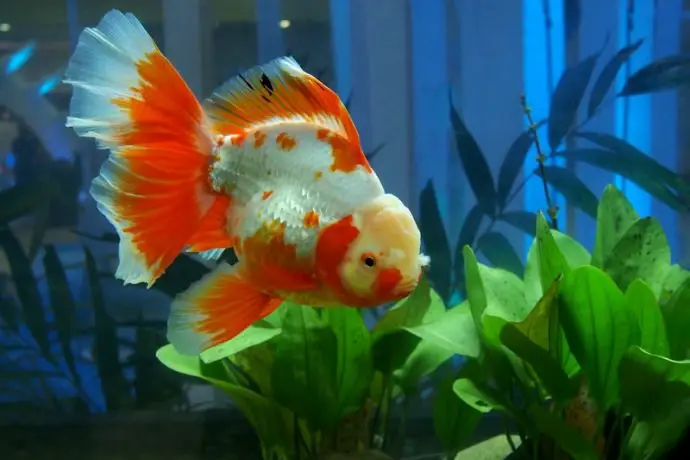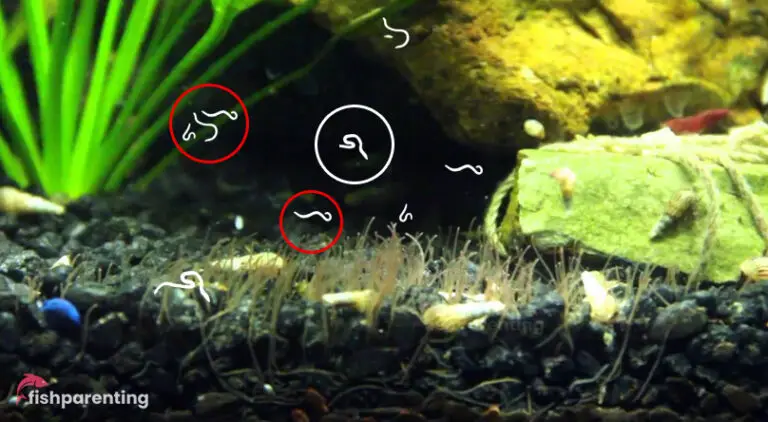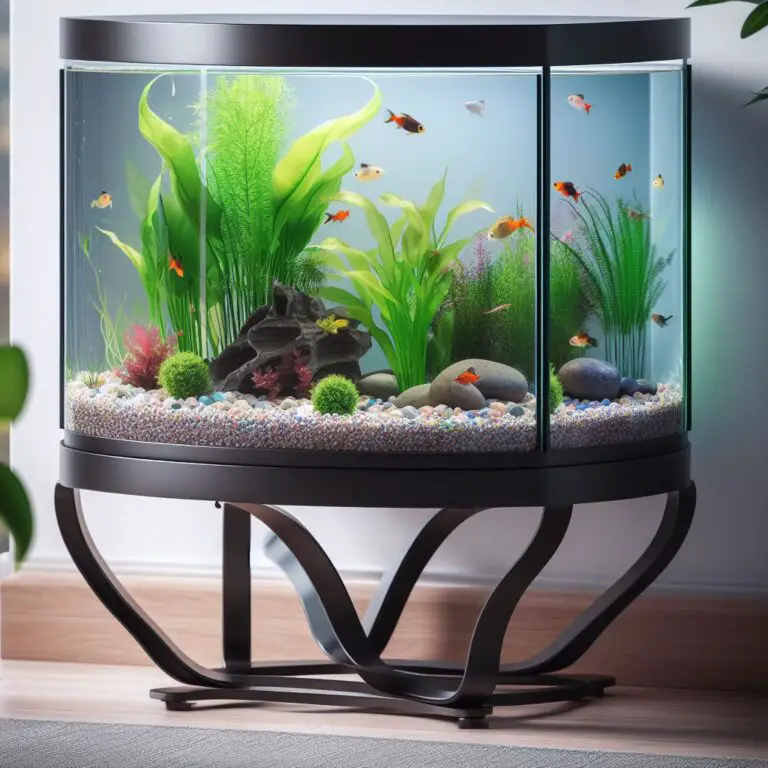Why is My Fish Tank Foaming?
My fish tank may be foaming because of an excess of proteins and other organic compounds in the water. This is often caused by overfeeding, decaying matter such as plants or uneaten food, or a filter that is not working properly. When these substances accumulate in the water they can cause bacteria to form which produce foam.
An additional cause could be chemical imbalances in the tank due to inadequate maintenance causing nitrogen levels to rise and create bubbles in the aquarium. To solve this problem it’s important to regularly clean out your tank, do regular water changes, ensure your filter is functioning correctly and maintain proper feeding habits for your fish.
Foaming in a fish tank can be caused by a variety of factors, such as an imbalance of nutrients, excess organic matter buildup, or even the presence of certain bacteria. In any case, it’s important to address the issue quickly and methodically in order to protect your fish and keep them healthy and happy. Regular water changes are essential for preventing foaming, but if foam persists you may need to take more drastic measures such as cleaning gravel or removing any decaying plant matter that could be contributing to the problem.
It’s also important to make sure not to overfeed your fish – too much food can cause excessive waste which leads to foaming. If all else fails, speak with an aquarium specialist who will be able to diagnose and treat any underlying problems that could be causing the foam.
How to Get Rid of Foam in Fish Tank
One of the most common causes for foam in a fish tank is an excess of proteins, which can come from fish waste, uneaten food and other organic matter. To get rid of this foam, you should do a 25-50% water change every week or two and make sure to vacuum the substrate (gravel or sand) during the water changes. You may also need to reduce your feedings as overfeeding can contribute to extra proteins in your aquarium.
Additionally, adding an air stone can help keep the water oxygenated and reduce surface agitation that could be causing protein foams.
Why is There White Foam in My Fish Tank
White foam in your fish tank probably means that there is an excess of organic compounds or proteins in the water. This could be caused by a number of things, such as overfeeding, decaying food particles or waste, bacteria blooms due to high nitrate levels, and even certain medications used to treat diseases. If you notice white foam accumulating in your fish tank it is important to take action immediately so that you can keep it clean and healthy for your fish.
Are Bubbles in a Fish Tank Bad
Bubbles in a fish tank are not necessarily bad, but they can be an indication of a problem. If you notice bubbles forming on the surface of your aquarium water, it could mean that your filter is malfunctioning or blocked. This can cause dangerous levels of ammonia and nitrites to build up in the aquarium, which can lead to serious health problems for your fish.
Therefore, if you notice bubbles in your fish tank, it’s important to check and fix any potential issues with your filtration system as soon as possible.
Can Protein Foam Kill Fish
Protein foam, also known as protein skimmer or “foam fractionator” is a piece of aquarium equipment used to remove organic waste from water. While this device is beneficial in maintaining clean and healthy aquariums, it can be dangerous if the foam builds up too much and produces an excessive amount of bubbles. When these bubbles reach the surface of the water, they may cause oxygen deprivation which can result in fish death.
Therefore, it is important for aquarists to monitor their protein foam levels closely to ensure that there no danger presented to their aquatic life.
Why are There Bubbles in My Fish Tank After Cleaning
After cleaning a fish tank, bubbles can form in the water due to agitation of the surface. This is caused by trapped air that was stirred up during the process of removing and replacing old aquarium water with fresh tap or filtered water. The bubbles are not harmful to your fish, but they can take away from the overall aesthetics of an aquarium if left unchecked.
Bubbles on Top of Fish Tank Goldfish
Bubbles on top of a fish tank can be beneficial for goldfish as they help to oxygenate the water. This ensures that your goldfish are able to breathe properly, and reduces their stress levels. If you notice an increase in bubbles at the surface of your tank, it may indicate that your filter is not working efficiently or that there is too much waste in the water – both of which could have negative consequences for your fish.
Be sure to check regularly for any signs of distress or unhealthy conditions.
Why Does My Fish Tank Have Bubbles on the Sides
A layer of tiny bubbles on the sides of your fish tank might be caused by a process called outgassing, which occurs when oxygen is released from water into the atmosphere. Outgassing can occur due to certain chemical reactions inside the aquarium, such as those associated with biological waste and decaying plant matter. In addition, outgassing can be caused by overstocking or overcrowding in an aquarium, as too many fish can produce more metabolic waste than what tanks are designed for.
Bubbles in Fish Tank Without Filter
Bubbles in a fish tank without a filter can be caused by several different things, including overfeeding or too much agitation of the water. If bubbles are present and there is no filter present, it is important to check the oxygen levels in your tank as low oxygen can cause stress for your fish. You should also ensure that all of your maintenance routines are done correctly, such as weekly water changes and cleaning of any decorations in the tank.
Lastly, if you think overfeeding may be causing the bubbles, only feed what your fish will consume within two minutes twice per day.

Credit: www.youtube.com
How Do You Get Rid of Foam in a Fish Tank?
Getting rid of foam in a fish tank can be a tricky task, but it is necessary for the health and safety of your fish. It’s important to identify what kind of foam you have so that you can choose the right method to eliminate it. If your foaming comes from an aerator or filter system, make sure they are functioning properly by checking things like plumbing connections and water levels.
You may also want to adjust water flow if needed. If you’re able to reduce the amount of air bubbles entering the tank, that should help with foaming caused by these devices. Foam created by organic matter such as decaying food or plant debris can be removed using filters and vacuuming during regular maintenance sessions; however, if the issue persists then chemical treatments are available at pet stores specifically designed for this purpose.
Additionally, adding some beneficial bacteria into your tank will help keep biological waste down which could contribute to excessive foaming as well as other water issues like ammonia buildup which can become toxic for your fish over time. Ultimately, making sure all components in your tank are monitored regularly and kept clean will go a long way towards avoiding any problems associated with foam accumulation!
Why is My Fish Tank Water Foaming?
Foaming in a fish tank can be caused by several different factors. In most cases, the primary cause of foaming is an accumulation of organic matter and debris that has become trapped in the substrate or filters. This organics will decompose, releasing gases such as nitrogen that create foam on top of the water.
Another common cause of foamy water is an overabundance of proteins from uneaten food or waste products like nitrates which accumulate in the aquarium over time. Additionally, chemical imbalances resulting from incorrect pH levels or too much chlorine can also lead to foam formation. Finally, certain types of bacteria and algae growth may release particulates into your tank’s water column which then creates bubbles as they rise to the surface and burst.
It’s important to determine what exactly is causing your foamy water issue before attempting any treatments so you can address it effectively – if left unchecked this type problem can quickly spiral out control leading to oxygen deprivation for your fish and other aquatic life forms living within your tank ecosystem. Regularly testing pH levels, performing partial water changes using dechlorinated tap-water (or aged/conditioned) should help keep things under control while keeping an eye out for anything unusual appearing within your tank environment would be wise as well when trying to prevent future problems with foam buildup!
Is Foam in Fish Tank Safe?
When it comes to keeping your fish tank clean and healthy, one of the questions that often arises is whether foam in a fish tank is safe or not. The answer is yes, foam can be used safely as long as you take the right precautions. Foams are great for trapping dirt and debris and also provide a protective barrier between surfaces in an aquarium.
When using foam, make sure you pick one specifically designed for use with aquariums so that it won’t leach any chemicals into the water or harm your fish. Additionally, when adding new substrate materials such as rocks or sand to the tank, make sure they are thoroughly rinsed off before being placed in order to avoid contaminating them with soap residue from previous cleaning sessions. Lastly, keep an eye on how much foam accumulates over time; too much of it can cause cloudiness in the water which could be detrimental to your aquatic life!
What is the White Fluffy Stuff in My Fish Tank?
The white fluffy stuff in your fish tank could be a number of things. It might be a harmless bacteria or fungus, or it can also be an indication that something is wrong with the water quality. If you have recently added any new rocks, plants, decorations, or other items to your tank then the white fluff may just be harmless debris from these objects breaking down over time.
However, if you notice any changes in the coloration of your fish such as discoloration or fin erosion then this could indicate an issue with ammonia levels which will require immediate attention and treatment. In either case it’s best to keep a close eye on the ‘white fluffy stuff’ and take appropriate action when needed for both the health of your fish and overall aquarium environment.
foam on aquarium water – reasons and ways to eliminate bubbles in your fish tank
Conclusion
In conclusion, it is important to understand the why and how of aquarists’ tanks foaming. It can be caused by a variety of conditions, both natural and man-made, but with proper maintenance it can be avoided. By understanding what is causing the foam, you will have a better chance of keeping your aquarium healthy for your fish.
If problems do arise, take action quickly to remedy them before they become serious issues with potentially devastating consequences.




